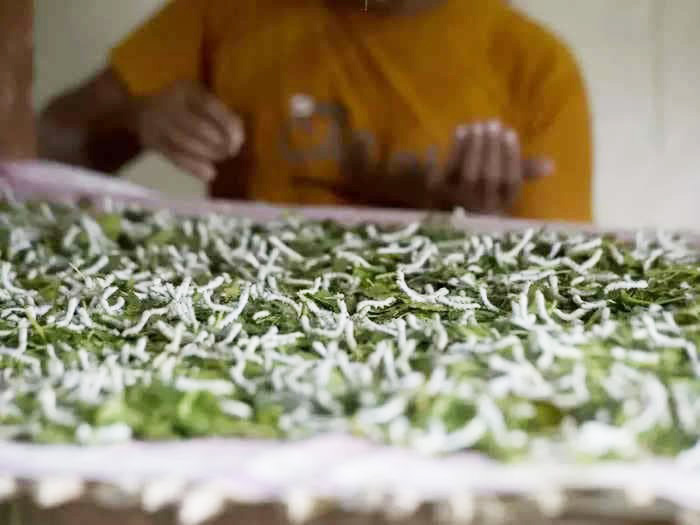
Category: FIBRES
Country: China
Region: South Asia
Using CRISPR-Cas9 gene-editing technology, researchers modified the DNA of silkworms so that their silk-producing glands would instead create spider silk, which naturally has a protective layer that protects it from humidity and sunlight exposure.
By Ankush Banerjee
22nd September 2023 10:53 IST
2 min read
As fantastical as superheroes swinging amongst skyscrapers using mere spiderwebs might seem, there is nothing short of magic to this material. Despite being only a sixth the density, spider silk is five times stronger than steel.
In addition to being a very comfortable material to wear, this low-density fibre is notorious for its toughness, comparable to the most modern synthetic polymer fibres, with the silk of some species being up to ten times stronger than Kevlar — the stuff that makes up bulletproof vests. Man of steel, who?
But before you begin listing advertisements for unemployed spiders to come start a silk factory with you, there's a small hitch you should know about. It is excruciatingly time-consuming and laborious to actually cultivate the material. Unlike silkworms that are just happy to share space with others in their family, spiders will often resort to brutal cannibalism if placed in the same area.
If you don't mind the mountain of time, space and ickiness of manually "milking" each spider for its silk, we wish you the best of luck. But we also advise you to wait a little while, as scientists have come up with a brilliant solution to this too.
Using CRISPR-Cas9 gene-editing technology, researchers modified the DNA of silkworms so that their silk-producing glands would instead create spider silk, which naturally has a protective layer that protects it from humidity and sunlight exposure.
A roaring success in the experiment resulted in full-length silkworm-originated spider silk-like fibres which were a whopping six times tougher than the Kevlar used in bulletproof vests! And the best part is scientists think upscaling is not too far off.
"Silkworm silk is presently the only animal silk fibre commercialised on a large scale, with well-established rearing techniques," explains study author Junpeg Mi. "Consequently, employing genetically modified silkworms to produce spider silk fibre enables low-cost, large-scale commercialisation."
The fact that this is a natural protein fibre means the environment is left squeaky clean as well. Synthetic fibres constitute over 60% of all fibre production in the world, and an estimated 35% of all microplastics that enter oceans originate from these materials.
Further, their creation often utilises dirty fossil fuels that belch massive amounts of greenhouse gases into the air. Spider-worm silk could clean this up really nicely.
In addition to creating more comfortable and sustainable garments, their unique properties lend them usage in many niche areas as well, including the military, aerospace technology, smart materials, and biomedical engineering.
The findings of this research have been published in Matter and can be accessed here.
Courtesy: Businessinsider.in
Copyrights © 2026 GLOBAL TEXTILE SOURCE. All rights reserved.